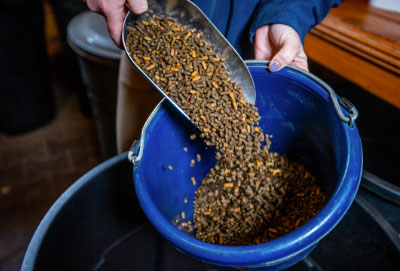Fiber in Horse Feeds

Horses should consume 1.0 – 1.5% of their bodyweight per day in quality roughage to meet their fiber needs. The first and foremost source of fiber in a horses’ diet is their roughage, or hay, source. Secondary to that is what is present in any supplemental grain sources.
First of all, let’s define what fiber is:
- Fiber is a measure of the plant cell wall, or the structural portions that give the plant support
- Main components of fiber are the digestible cellulose and hemicellulose, and the indigestible lignin
- As a crop of hay matures, the lignin content increases and the cellulose and hemicellulose decrease
Here’s what happens as a horse consumes roughage:
- Some quick digestion occurs in the stomach and small intestine, allowing starches and sugars to get digested as the forages pass through this portion of the digestive system.
- The fiber begins to get digested as the feed passes into the hindgut, or the cecum and colon.
- Fiber is digested well here is because of the presence of billions of microorganisms (bugs) whose sole function is to digest fiber.
- These microorganisms break down fibrous feeds into short chain volatile fatty acids, which are a source of energy for the horse.
